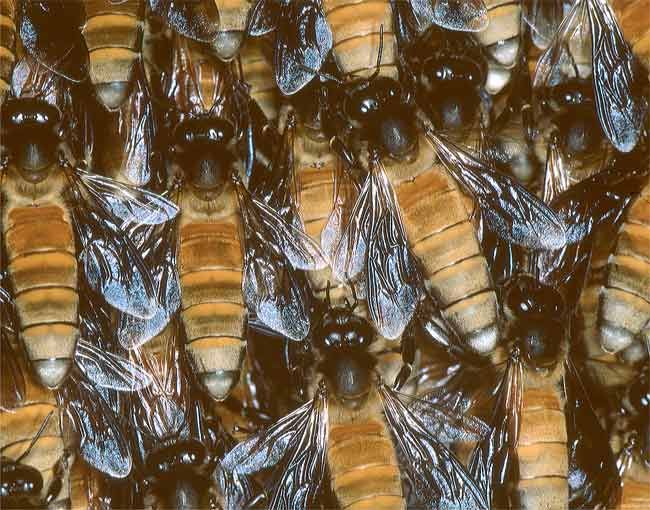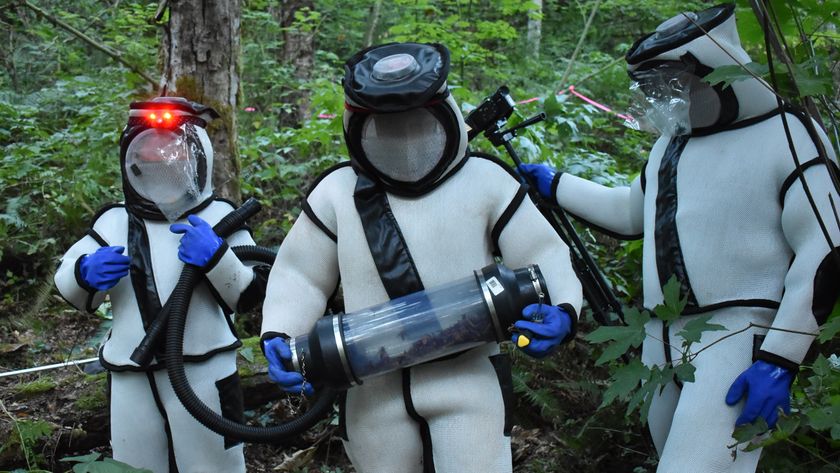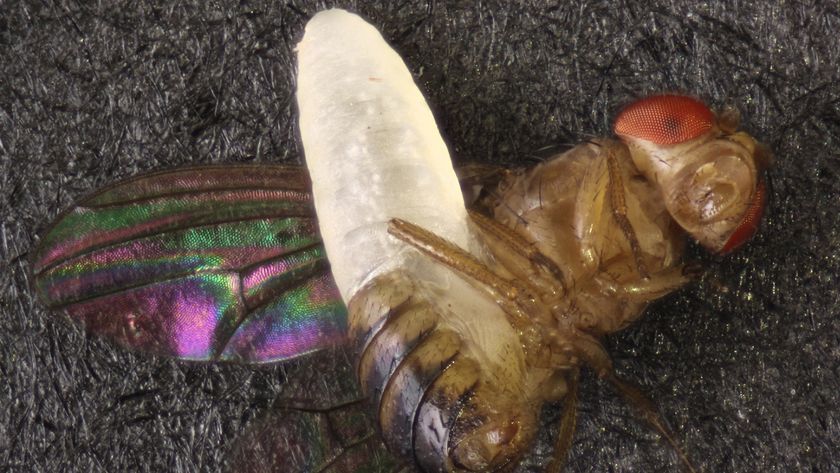Bees Do the Wave to Save Their Lives

When bees do the wave, they put sports fans' stadium tricks to shame.
Giant honeybees are known to flip their bellies up en masse to create a giant wave called a shimmer, somewhat akin to humans rhythmically throwing their hands in the air in a wave at a football game.
But the bees' wave isn't for recreation, but rather protection, a new study found.
Giant honeybees (Apis dorsata), native to southern and Southeast Asia, are nearly an inch (2.5 centimeters) long, about twice the size of Western honeybees. When faced with a threat, hundreds or even thousands of giant honeybees will all rotate their abdomens in a split second to create an iridescent effect that seems to startle and confuse wasps, which hunt giant honeybees for food.
Scientists have observed this behavior before but never understood its purpose. But now researchers have determined that shimmering is triggered by approaching wasps, and serves to drive them away.
Gerald Kastberger at the University of Graz in Austria and colleagues videotaped 450 interactions between honeybees and wasps and found that when wasps drew near, bees would initiate a shimmer, which would drive the wasps to fly at least a foot and half (50 centimeters) away. The wasps would continue to hunt among the free-flying bees, but wouldn't attack the main nest.
"We were the first who were able to measure quantitatively that the wasp is definitely repelled," Kastberger told LiveScience. "If confronted with such a shimmering effect, within a second the wasp is frightened and turns around and flies off from the nest site."
Sign up for the Live Science daily newsletter now
Get the world’s most fascinating discoveries delivered straight to your inbox.
The study is detailed in the Sept. 10 issue of the journal PLoS ONE.
The researchers still don't understand just how the honeybees are able to perform such a synchronized feat, which requires lightning-fast communication between thousands of bees.
"If you think of people doing the Mexican wave in football stadiums, it takes several seconds, even 10 seconds or longer for that wave to come around the football stadium," Kastberger said. "The horizontal span of a honeybee nest can well reach 2 meters [6.5 ft]. Such a wave in honeybees only takes 800 milliseconds. The topic of my further expeditions is to find out how they communicate so quickly."
While the discovery of the purpose behind shimmering was a satisfying scientific advance, it did not come without a cost. During the course of research Kastberger said he got "stings and stings and stings."












